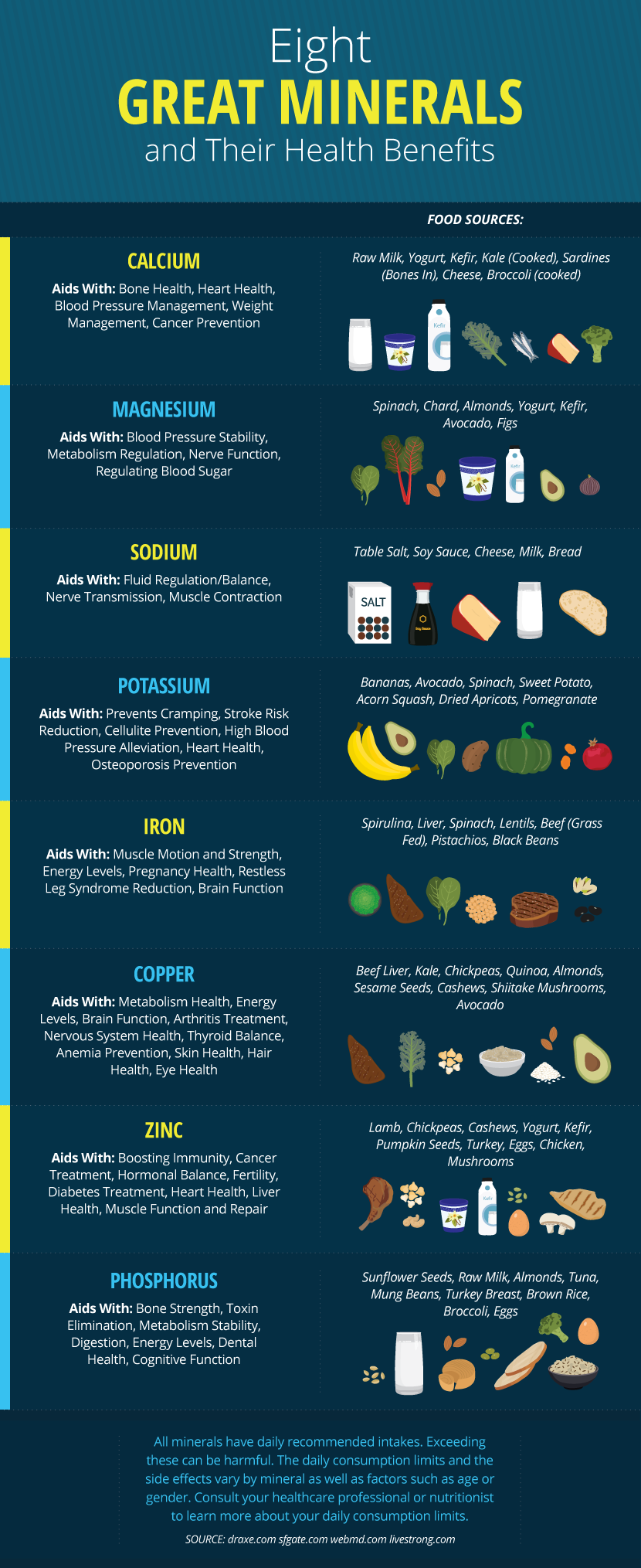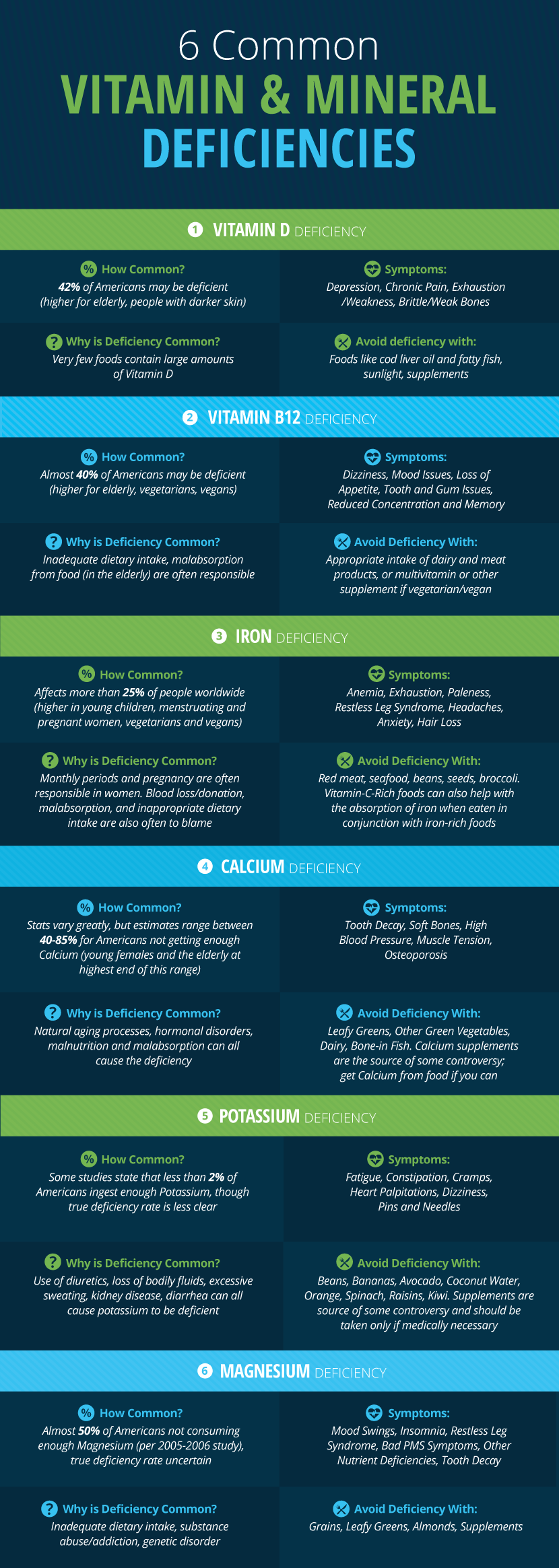Guide to Vitamins and Minerals
Everyone knows that vitamins and minerals are the teeny-tiny building blocks of good health. Knowing exactly what these complicated chemical substances – often collectively known as micronutrients – actually do individually can be trickier to understand. We have put together the following illustrated guide to help lift the veil on vitamins and minerals.
Before we begin, it’s important to establish a few things. The following guide, particularly as it pertains to vitamin and mineral intake and deficiency, is not tailored to your specific, individual needs and should not be used for self-diagnosis in any way. If you have questions or concerns about your specific intake of vitamins and minerals you should consult a healthcare professional before making any drastic changes, or attempting supplements. It’s also important to recognize that there can be such a thing as “too much of a good thing,” even when it comes to completely healthy micronutrients. Therefore, we recommend consulting a doctor before you attempt to supplement for vitamins and minerals. Vitamin/mineral overdoses, or “megadoses” usually come about because of misuse of extremely potent supplements rather than an overdose from diet alone. For that reason, we are focusing our guide mostly on diet and food groups.
Vitamins
Vitamins are nutrients that help our bodies function in a number of ways. They’re especially important in maintaining bodily functions like immunity and metabolism. There are two types of vitamins our bodies need, water soluble and fat soluble. Fat soluble vitamins (Vitamin A, Vitamin D, Vitamin K, Vitamin E) are held in the body’s fat cells if you take in more than is needed. They’re not easily damaged or destroyed by cooking. Water-soluble vitamins (Thiamin, Vitamin C, Pantothenic Acid, Folic Acid, Vitamin B12, Vitamin B6, Niacin, Riboflavin, Biotin), on the other hand, are not stored. Your body will absorb what’s needed and get rid of the rest. They need to be replaced each day for that reason, and are also easily destroyed during cooking. Without further ado, let’s dive into 13 of the most important vitamins, how they help your body to function, and common foods you can find them in.

Minerals
Like vitamins, minerals are needed by the body to grow, heal, and function. When looking at some of these important minerals, it’s important to classify the two types: macrominerals (calcium, sodium, potassium, chloride, phosphorous, magnesium), and trace minerals (copper, zinc, iron, iodine, fluoride, selenium). We’ve compiled a list of eight important macrominerals and trace minerals, as well as great ways to get them in your diet, and a little information on how they can help your body thrive.

A Word on Deficiencies
There are so many reasons you could be deficient in a vitamin or mineral – genetics, disease, diet, age, gender, weight, and more – that we want to be very careful before discussing them. Do not self-diagnose a vitamin or mineral deficiency. You could end up being very wrong and do your body more damage by supplementing where you didn’t need to, resulting in an overdose, as mentioned above. It’s also possible to not be getting enough of a certain vitamin or mineral without being deficient. Please read our chart below with these facts in mind.

The Importance of Balance
It’s very hard to have an unhealthy balance of vitamins and minerals if you eat a healthy, balanced diet. Getting adequate vitamins and minerals needn’t be about eating one type of food to get one type of vitamin or mineral. If you inspect the spectrum of vitamins and minerals available in the major food groups, it becomes apparent that you can gain a variety of beneficial macronutrients by following healthy habits within these groups, and balancing them as you have likely always been encouraged to. It’s not just for weight/dietary reasons that you want to eat a balanced diet, but because of the range of vitamins and minerals your body can get from doing so.

Vitamins and minerals are mysterious things. To us humans, anything that can’t be seen without a microscope tends to be mysterious. We hope our illustrated guide has helped lift the curtain and demystify these amazing micronutrients so you can appreciate how you can and why you should get more of them in your daily life.
- http://www.webmd.com/diet/guide/effects-of-taking-too-many-vitamins#1
- http://www.dining.iastate.edu/nutrition/docs/vitamins.pdf
- http://extension.colostate.edu/topic-areas/nutrition-food-safety-health/fat-soluble-vitamins-a-d-e-and-k-9-315/
- http://extension.colostate.edu/topic-areas/nutrition-food-safety-health/water-soluble-vitamins-b-complex-and-vitamin-c-9-312/
- https://www.womenshealth.gov/fitness-and-nutrition/nutrition-basics
Embed the article on your site

























































